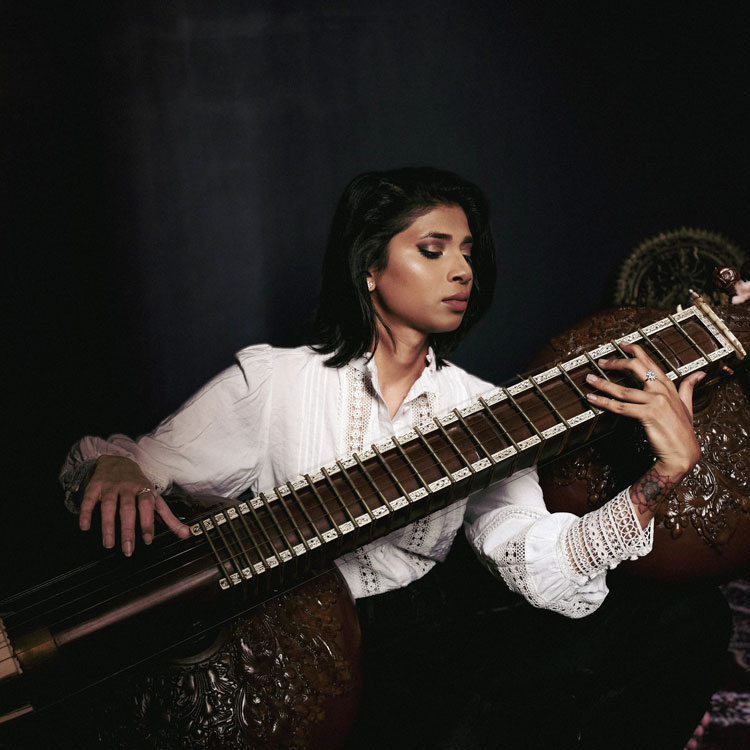The Rudra Veena (also known as ruda vina and bin) is a large, plucked stick zither string instrument that takes center stage in Hindustani Music, especially during dhrupad performances. It gets its name from two Sanskrit roots: Rudra, which stands for Shiva, and veena, translating to “instrument.”
The instrument’s earliest accounts can be found in the Vedas, followed by the Puranas. In Hindu mythology, the Rudra Veena’s origins are quite extraordinary. Legend has it that Shiva, upon seeing his graceful wife Parvati asleep, her arm delicately resting over her breasts, was inspired to craft an instrument mirroring her form. This stick zither includes two large gourds attached to a hollowed neck. Notably, the gourds provide a deep bass resonance.
Dhrupad, the most ancient variant of North Indian classical music, remains a vibrant tradition today. During the Mughal era, the Rudra Veena was a prominent instrument in the Dhrupad ensemble, regularly gracing courts across northern India. Musicians specializing in Dhrupad, including those skilled in the Rudra Veena, basked in the favor of diverse monarchs and nobles.
Lately, the Rudra Veena has garnered renewed attention, partly attributed to its appeal to musicians beyond India’s borders. Madhuvanti Pal, a trailblazing Rudra Veena artist of the new generation, is imparting her knowledge to students both in India and overseas.
Early records indicate that women were instrumentalists of this device. This historical evidence is etched in sculptures adorning Hindu temples, some with an age surpassing two millennia, exclusively portraying women as Rudra Veena players. Moreover, miniatures dating from the 15th to the 17th centuries frequently depict women engaged in playing the Rudra Veena. However, contemporary times have witnessed a marked stigma around female instrumentalists. Earlier texts even went so far as to insinuate that women were barred from playing the instrument, as it might attract an undesirable “curse.”
Jyoti Hegde, perhaps the most renowned female Rudra Veena virtuoso, shattered this prejudice; her audacity paved the way for aspiring musicians like Madhuvanti Pal. Yet, while Jyoti Hegde adheres to the traditional Rudra Veena, Madhuvanti opts for a modified Dagar-style rendition.
A scarce collection of Rudra Veena recordings is available, with most featuring Ustad Asad Ali Khan, Ustad Zia Mohiuddin Dagar, and his son, Bahauddin Dagar. This is primarily due to the formidable challenge of capturing the essence of the Rudra Veena in recorded formats. In 2023, the Sublime Frequencies record label announced the release of The Holy Mother – Madhuvanti Pal Plays The Rudra Veena.
(headline image: Madhuvanti Pal playing the rudra veena, courtesy of Sublime Frequencies)



A very informative article.
As my disciple Madhuvanti has shown commendable calibre in mastering the Rudraveena.Young and vibrant, her music will grow over the time and I look forward to her blossoming as a major lady exponent of this ancient instrument of India.